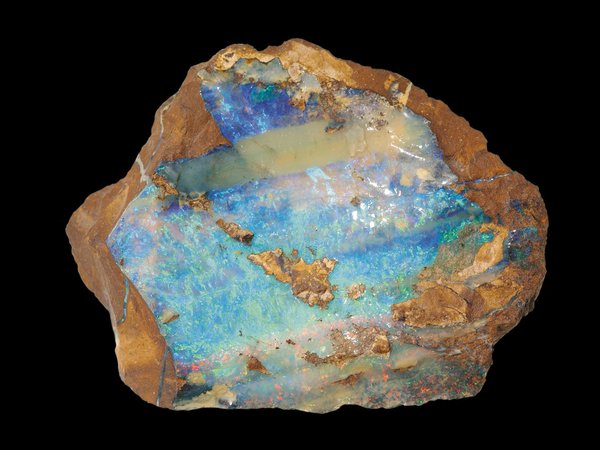George Smith Collection
The George Smith Collection contains superb and rare specimens obtained from famous mines in Australia and around the world.


The collection
The George Smith Collection is particularly rich in Broken Hill specimens, many of which are rare, such as silver chlorides and iodides, stolzite (lead tungstate), silver, and crystals of antimony silver (dyscrasite).
The collection contains superb examples of many species and chemical groups that were only obtainable at this location and at this time.
In fact, this is the hallmark of the George Smith Collection: minerals collected from famous mines at just the right time, when some of the best specimens were being produced.

Copper, Proprietary Mine, Broken Hill, New South Wales, Australia. 5 x 2.5 x 0.5 cm. D.27539.
This specimen is an exceptional example of the arborescent (branching) native copper specimens from Broken Hill. Such crystallised copper specimens were found in the oxidised zone of the Broken Hill orebody. The long cylindrical ‘sticks’ are actually very elongated crystals of copper.
Image: John Chapman © Mineralogical Society of New South WalesAbout George Smith
George Smith was born in Adelaide, South Australia, in 1862. His early work with the English and Australian Copper Company in Adelaide introduced him to wonderful copper minerals such as malachite being mined at Burra, Moonta and Wallaroo.
The Broken Hill orebody had been discovered in 1883 and George moved to Broken Hill with his family in 1888. He first studied the Consols Mine, collecting its rich silver and antimony-silver specimens. His position gave him easy access to all the mines in the region, and he was able to save many wonderful specimens for posterity.
George started trading mineral specimens with other collectors and overseas museums, so the wonderful minerals from Broken Hill became famous internationally.

As a result of these exchanges George built up a fine collection of overseas minerals from classic locations. By the time George left Broken Hill after an 11-year stay, he had been the first to identify 40 of the 70 non-economic minerals found so far in the district and had personally collected thousands of the finest and most interesting specimens. Many of these were no longer available from the mines.
In 1899, George became Mine Manager for the Chillagoe Railway and Mining Company. He collected some outstanding mineral specimens, particularly the unusual flower-like pseudomorphs of chrysocolla after azurite from the Dorothy Mine, of which only a handful were saved.

Bromine-rich chlorargyrite (embolite) with cerussite, Broken Hill, New South Wales, Australia. 7 x 4 x 1 cm. D.28191. Silver minerals containing chlorine, bromine or iodine are called silver halides and they are light sensitive, turning dark when exposed. This specimen has been carefully stored in a lightproof box, so it still retains its original olive colour and translucency and its delicate embolite and fragile V-shaped cerussite crystals remain intact. Both specimens were purchased as part of the 1927 acquisition of 1700 Australian and overseas minerals – the last collection of the legendary George Smith.
Image: John Fields © Australian MuseumIn 1904 George was appointed New South Wales Inspector of Mines and moved to Sydney. This position gave him unique opportunities to visit many mines and collect superb specimens. His experiences in South Australia and Queensland gave opportunities for collecting superb atacamite, malachite, chrysocolla and chalcopyrite specimens. Mines in Cobar gave George opportunities for collecting wonderful malachite and azurite and, in New England, great specimens of cassiterite, wolfram, bismuth, bismuthinite, molybdenite and beryl. Fine overseas specimens were obtained by exchanging with American and European collectors.
With his collection rapidly growing, George was looking for a suitable home for his specimens and offered them to the Australian Museum in 1905. After some negotiation, the Museum purchased 1500 specimens in 1907. In 1927 he sold his last major collection of 1700 Australian and overseas specimens to the Museum for £500. George died in Mosman, Sydney, in 1944.
Every specimen George Smith collected was special. He was a very discriminating collector with very high selection standards. His diligence in collecting outstanding specimens earned him the nickname ‘Specimen Smith’. When perusing the Australian Museum’s mineral collection drawers, if only one specimen stands out, it’s likely one of Smith’s. They’re each immediately recognisable – their high quality, aesthetics and perfection always shine through.




